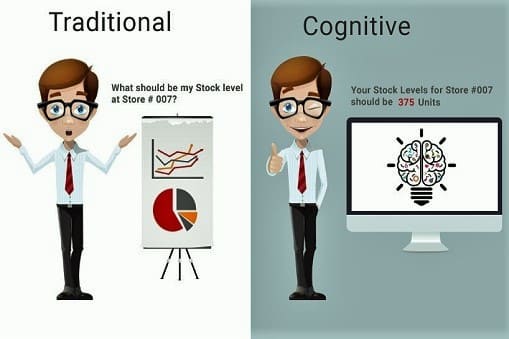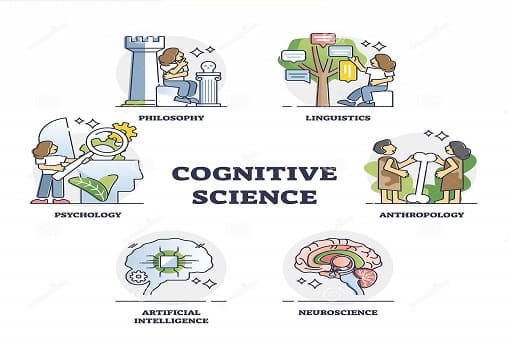Cognitive Computing

Artificial intelligence has been a distant goal of computing since the origination of the computer, but we are getting closer than before with the new cognitive computing techniques.
Cognitive computing comes from a mixture of cognitive science — the interdisciplinary study of the mind and intelligence and does it.
Coming from the combination of cognitive science and based on the basic premise of imitating the human thought process, the concept as well as the applications of cognitive computing, are destined to have extensive impacts on our private lives, also on industries like healthcare, insurance and many more. The advantages of cognitive technology are well and absolutely a step beyond the conventional AI systems.

Cognitive Computing vs Artificial Intelligence
While artificial intelligence’s basic use case is to implement the best algorithm to solve any problem, whereas cognitive computing goes a step beyond and tries to imitate human intelligence and understanding by analyzing a series of factors. When compared with Artificial Intelligence, cognitive computing is totally a different concept.
- Cognitive computing learns & imitates the human brain.
- Cognitive computing doesn’t throw humans from the picture.
- Cognitive Computing does not make decisions for humans, rather add-ons to our own decision making.

What is Cognitive Computing?
Hidden among the 2.5 billion gigabytes of data generated each day, Smarter decisions to be made and innovative discoveries to unlock. We need systems to behave and interact with us more intelligently to record this data in all its forms.
Cognitive computing means enabling machines to interact with humans in a more natural way. Cognitive technology is a key to drawing rational business conclusions from the right data, so you can implement solutions with confidence. Cognitive computing uses a mixture of artificial intelligence, machine learning, natural language processing, sentiment analysis and contextual awareness to solve everyday problems like humans.
Cognitive computing provides a platform that is based on the scientific disciplines of artificial intelligence and signal processing. These platforms enclose machine learning, reasoning, natural language processing, speech recognition and vision (object recognition), human–computer interaction, dialog and narrative generation, among other technologies.
Cognitive computing is an attempt to have computers imitates the way a human mind works. To achieve this, cognitive computing uses artificial intelligence (AI) and other key technologies, including the following:
- Neural networks
- Machine learning
- Deep Learning
- natural Language Processing (NLP)
- Speech Recognition
- Object Recognition
- Robotics
How Cognitive Computing works?
The systems which are used in the cognitive computing combines data from various sources while suggesting the best possible answers. To achieve this, cognitive systems includes self-learning technology that uses data mining, pattern recognition and NLP to mimic human intelligence.
Using computer systems to resolve various problems that humans are typically assigned with requires extensive amount of structured and unstructured data to feed the machine learning algorithms. Over time, cognitive systems are able to clarify the way they identify patterns and the way of processing data. They become efficient of anticipating new problems and designing possible solutions. The more and more data a system is reveal to, the more it is able to grasp and the more accurate it becomes over the time.
To accomplish those capabilities, the cognitive computing systems must have the following features:
- Adaptive - The cognitive systems must be flexible and sufficient enough to learn as information changes and as goals develop. They must learn dynamic data in real time and alter as the data and environment change.
- Interactive - Human-computer relationship is a critical element in cognitive systems. Users must be able to interconnect with the cognitive machines and describe their needs. The technologies must also be able to interlink with other processors, devices and cloud platforms.
- Iterative and stateful - Cognitive computing technologies can ask questions and pull in extra data to identify or clarify any problem. They must be stateful in that they keep information about similar situations that have previously took place.
- Contextual - Understanding context is critical in conceptual processes. Cognitive systems must realize, identify and mine contextual data, such as syntax, time, location, domain, requirements and a user's profile, tasks and goals. The systems may produce on multiple sources of information, including structured and unstructured data and visual, auditory and sensor data.
Advantages of Cognitive Computing
The advantages of cognitive computing includes the:
- Analytical accuracy - Cognitive computing is skilled at comparing and cross-referencing structured and unstructured data.
- Business process efficiency - Cognitive technology can allow patterns when analyzing large data sets.
- Customer interaction and experience - The contextual and relevant information that cognitive computing provides to customers through tools like chatbots improves customer interactions. A combination of cognitive assistants, personalized recommendations and behavioral predictions enhances customer experience.
- Employee productivity and service quality - Cognitive systems help employees inspect structured or unstructured data and identify data patterns and trends.
Disadvantages of Cognitive Computing
The disadvantages of cognitive computing includes the:
- Security challenges - Cognitive systems require large amounts of data to learn from. Organizations using these systems must correctly protect that data, especially if it is health, customer or any type of personal data.
- Long development cycle length - These systems call for skilled development teams and a decent amount of time to develop software for them. The systems themselves need large scale and detailed training with large data sets to understand the already given tasks and processes.
- Slow adoption - The slow development lifecycle is one the reason for slow adoption rates. Smaller organizations may find difficulties implementing the cognitive systems and therefore they avoid them.
- Negative environmental impact - The process of training cognitive systems and neural networks eat up a lot of power and has a sizable carbon footprint.
Applications of Cognitive Computing
Cognitive computing systems are used to achieve tasks that require the parsing of large amounts of data. Examples of cognitive computing used in various industries which includes the following:
- Healthcare - Cognitive computing can deal with unstructured healthcare data such as patient histories, diagnoses, conditions and journal research articles to make suggestions to medical professionals. This is done with a goal of helping doctors make better treatment decisions. Cognitive technology helps in expanding a doctor's capabilities and assists with decision-making.
- Retail - Helps in analyzing basic information about the customer, along with the details about the product the customer is looking at. The system then provides the customer with customized suggestions.
- Banking and finance - Cognitive computing in the banking and finance industry analyzes the unstructured data from various sources to gain more knowledge about customers. NLP is used to create chatbots that communicate with customers which helps in improving operational efficiency and customer engagement.
- Logistics - Cognitive computing helps in areas such as warehouse management, warehouse automation, networking and IoT devices.
Join Famark Community!
Famark community is a social platform for creative and innovative professionals from different domains.
Join Community